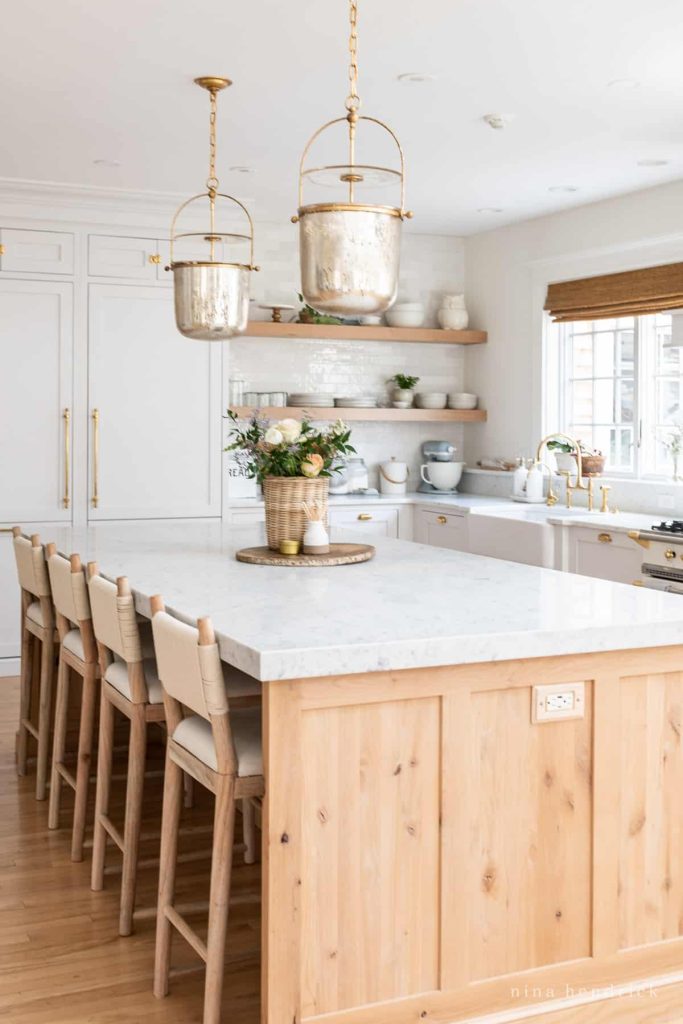
When it comes to renovating your kitchen, selecting the right finishes can completely transform the space. Among the most popular choices for countertops, cabinetry, and flooring are wood and stone finishes. These materials not only provide aesthetic appeal but also offer durability and timeless charm.
In this article, we explore how wood and stone finishes can elevate your kitchen design, their benefits and challenges, and tips for integrating them into your kitchen renovation.
Why Choose Wood and Stone Finishes?
Both wood and stone bring natural elements into the kitchen that offer texture, warmth, and elegance. Combining these two materials creates a dynamic balance between the earthiness of wood and the sleek, sophisticated appearance of stone. Here’s why they’re perfect for your next kitchen project:
1. Aesthetic Versatility
- Wood finishes add warmth, rustic charm, and organic beauty. Depending on the type of wood you choose—whether it’s rich walnut, warm oak, or sleek maple—you can create a variety of looks, from classic and traditional to modern and minimalistic.
Stone finishes, on the other hand, offer a luxurious, polished appearance. Materials like granite, marble, and soapstone provide a sophisticated edge that can either contrast or complement the natural warmth of wood finishes.
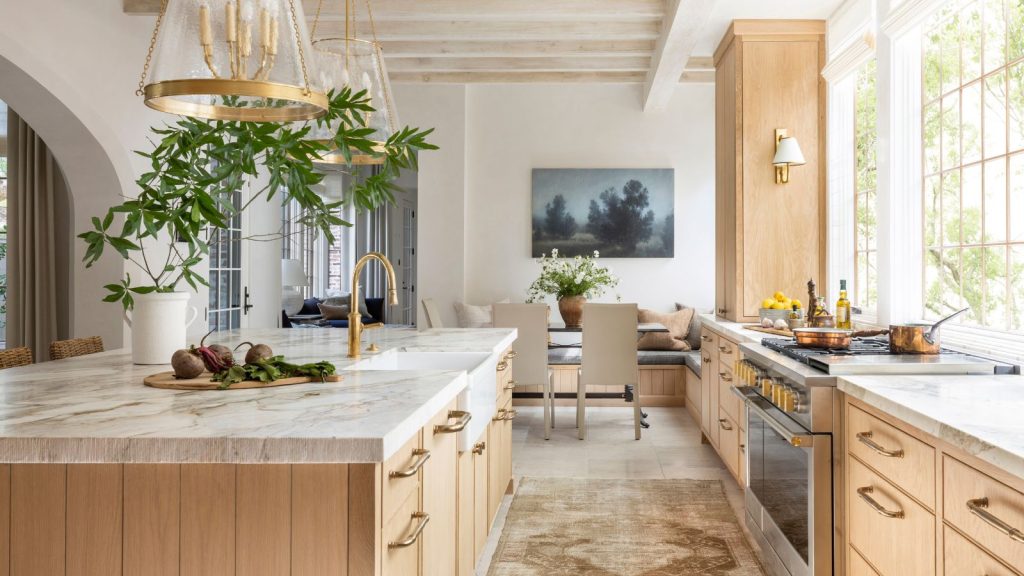
By combining both materials, you can create a well-rounded kitchen that balances natural textures and bold aesthetics.
2. Durability and Practicality
- Wood is naturally strong, especially when treated and sealed correctly, making it a reliable choice for cabinetry, shelving, and even flooring. Hardwood finishes like oak or maple are resistant to wear and tear, while softer woods like pine offer a more rustic appeal, though they may require extra care.
- Stone is well-known for its durability. Natural stones like granite and quartzite are extremely resistant to scratches and heat, making them ideal for countertops. Marble, though slightly softer, offers unmatched elegance and can be used in high-end kitchen designs.
When combined, wood and stone offer a blend of functionality and beauty that suits both high-traffic and luxury spaces.
3. Timeless Appeal
Both wood and stone have been used in home construction for centuries, and their enduring appeal continues to make them go-to options for kitchen renovations. Wood evokes a sense of timelessness with its natural grain patterns, while stone provides a refined and luxurious feel that never goes out of style.
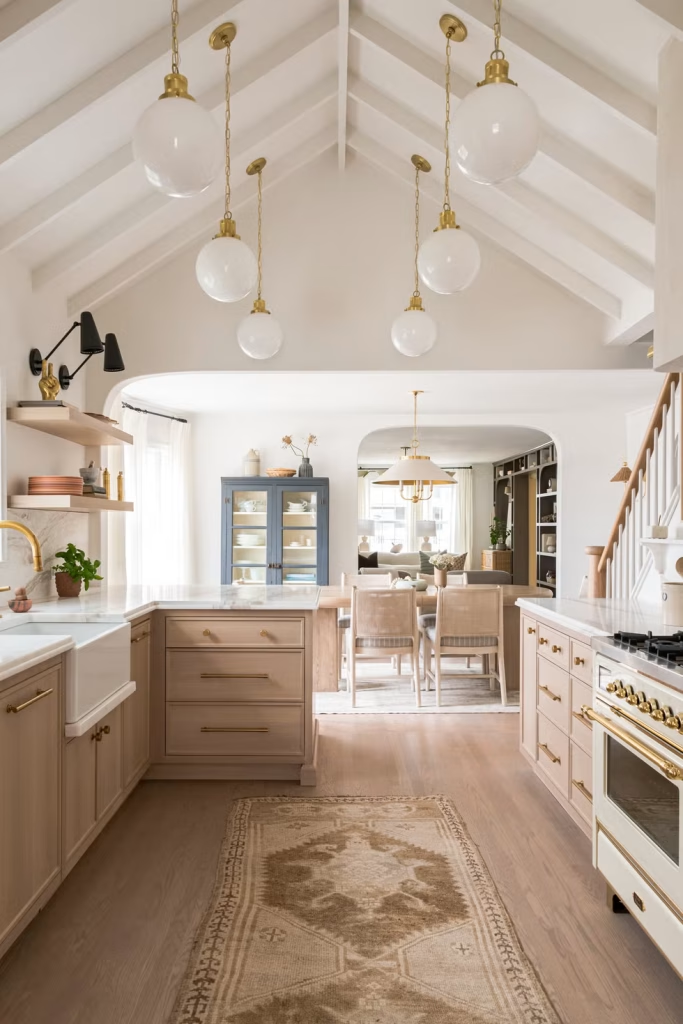
Where to Use Wood and Stone Finishes in the Kitchen
Countertops
Stone countertops are a classic choice for a kitchen that needs both beauty and function. Granite, quartz, and marble are commonly used for their durability, while wood countertops like butcher block offer a warm, inviting option. Some kitchens incorporate both, using stone for the main counter and wood for an island or breakfast bar.
Pro Tip: For a seamless look, consider using a stone backsplash that matches your countertop stone, and complement it with wood accents on your cabinetry or open shelving.
Cabinets
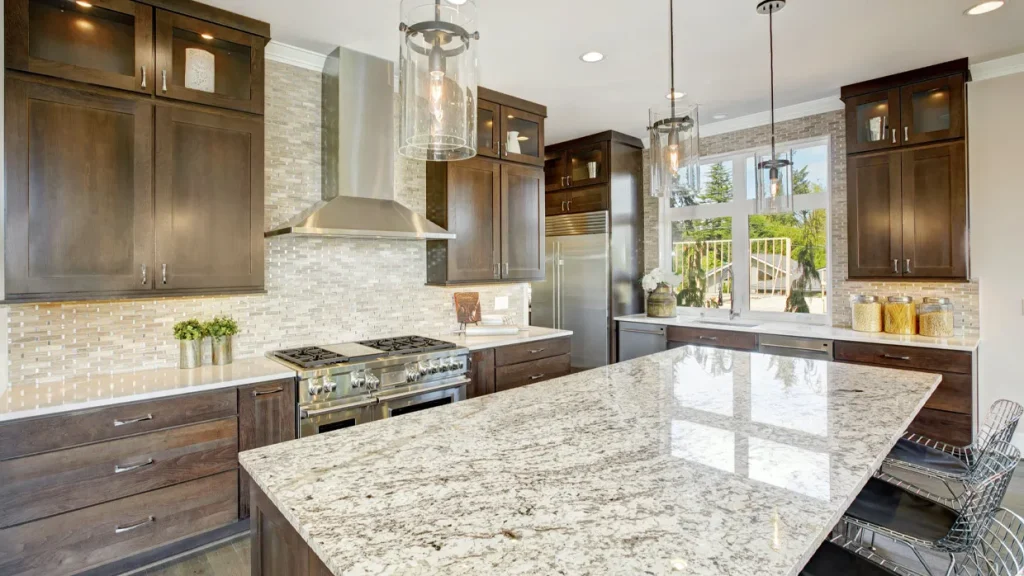
Wood is a natural choice for kitchen cabinetry. Whether you’re opting for the warmth of cherry wood, the elegance of walnut, or the light tones of birch, wood cabinets can suit any design. In contrast, stone cabinets are less common but can work beautifully in modern or minimalist kitchens, particularly with concrete finishes or stone veneer.
Flooring
Wooden floors create a rustic, homely vibe and are available in a range of finishes—from matte to glossy. Stone flooring, such as travertine or slate, offers durability, especially in high-traffic kitchens. You can combine the two by having wooden floors and a stone island or vice versa.
Accents and Features
Consider using stone accents in your kitchen, like a stone backsplash or a statement stone feature wall, to contrast beautifully with wood elements. Similarly, wood accents like open shelving, rustic beams, or wood-framed windows add warmth and charm to a stone-heavy space.
Benefits and Drawbacks of Wood and Stone Finishes
| Benefits | Drawbacks |
| Wood | |
| Adds warmth and character | Can scratch and dent over time |
| Eco-friendly and renewable | Requires regular maintenance (sealing) |
| Can be refinished to restore appearance | Vulnerable to water damage if not sealed |
| Versatile in different styles and colors | Can fade or darken with exposure to sunlight |
| Stone | |
| Extremely durable and long-lasting | Can be expensive |
| Resistant to heat and scratches | Natural stone may require sealing |
| Offers a luxury, timeless aesthetic | Heavy and can be difficult to install |
| Low maintenance (especially engineered stone) | Some stones, like marble, are prone to staining and etching |
Maintenance Tips for Wood and Stone Finishes

Wood Finishes:
- Seal and protect: Regular sealing can help wood surfaces resist stains and water damage.
- Clean with care: Use a gentle cleaner and avoid abrasive scrubbing. Clean spills immediately to avoid water damage.
- Refinish periodically: Depending on wear, wood countertops and cabinets may need to be sanded and refinished every few years to maintain their appearance.
Stone Finishes:
- Seal your stone: Most natural stones need sealing to prevent stains from oils, acids, and spills.
- Avoid harsh chemicals: Use pH-neutral cleaners to avoid damaging the stone’s surface.
- Wipe up spills promptly: Especially with marble and granite, acidic spills (like citrus or wine) can cause etching if left unattended.
How to Combine Wood and Stone in Your Kitchen Renovation
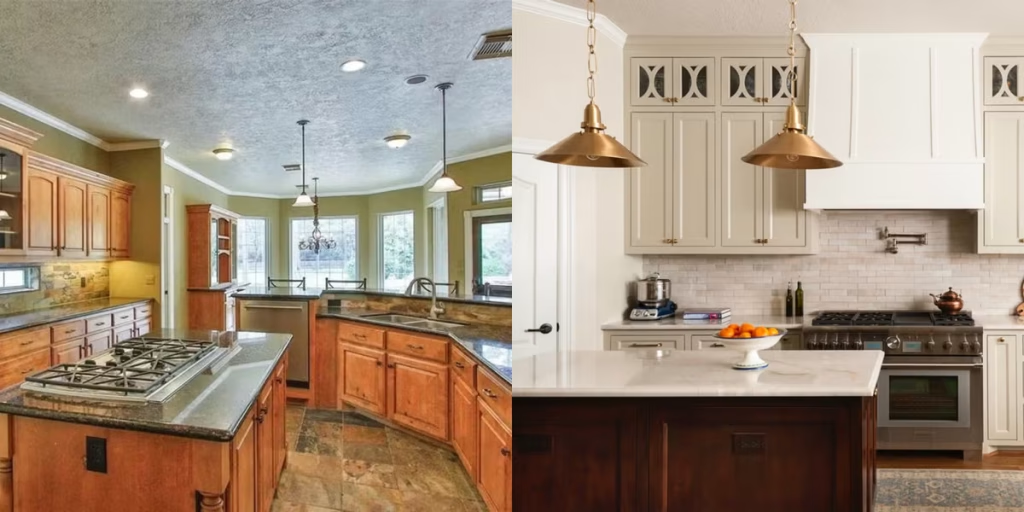
- Balance textures: Pair sleek stone countertops with warm wood cabinetry to create a harmonious contrast.
- Accent with materials: Use stone as the focal point for the kitchen island or backsplash, while wood can feature in shelving, drawer pulls, and flooring.
- Match tones: Choose complementary tones for the wood and stone finishes. For example, a lighter maple wood pairs beautifully with a darker granite countertop, creating a balanced, sophisticated look.
- Keep it functional: If you’re concerned about wear and tear, consider engineered stone for countertops (which is more durable than natural stone) and hardwood floors that are easy to refinish.
Final Thoughts: A Perfect Pairing
Integrating wood and stone finishes in a kitchen renovation allows you to play with natural textures, creating a space that’s both visually stunning and highly functional. Whether you prefer the organic warmth of wood or the elegant sleekness of stone, these materials offer endless possibilities for customization.
By thoughtfully combining wood and stone, you can create a kitchen that stands the test of time and provides a welcoming, luxurious atmosphere for cooking and entertaining.

Leave a Reply